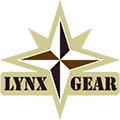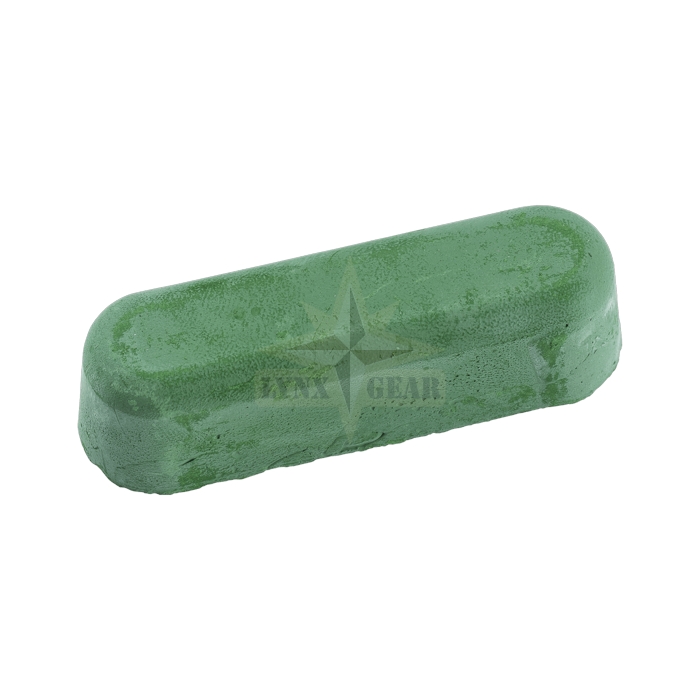Fallkniven Green Micro Fine Honing Compound Bar

Description
Fallkniven Green Micro Fine Honing Compound Bar
The Fallkniven Green Micro Fine Honing Compound Bar is a professional-grade abrasive compound designed for polishing, lapping, stropping, and honing knives and woodworking tools to a micro fine razor-sharp cutting edge. Made from a blend of fine-grade Chromium Oxide and Aluminum Oxide powders, it delivers a superior cutting action while producing a brilliant, mirror-like finish. The compound’s binding agents are formulated for easy application, adhering reliably to cotton, felt, leather, or wood surfaces.
This honing compound is created to refine cutting edges beyond ordinary sharpening. It transforms a sharp blade into an exceptionally smooth and highly polished edge, essential for precision cutting tasks.
Ideal for chefs, woodworkers, straight razor users, carvers, and tool enthusiasts who demand maximum sharpness and reliability from their blades and instruments.
The compound is versatile and can be used for both hand honing and power honing:
- Hand Honing: Apply on a leather strop for razors, chisels, carving knives, and fine cutting tools.
- Power Honing: Suitable with cotton or felt wheels, or leather belts for high-speed sharpening.
It is non-toxic and biodegradable, making it safe and environmentally responsible. Size: 60 × 19 × 18 mm.
Specifications
| Compound Name | Abrasive Type / Grade | Binder Content | Use Cut / Color | Abrading Scale |
|---|---|---|---|---|
| Black Emery | Aluminum Oxide | High | Fast Cut | Coarse |
| Brown Tripoli | Tripoli | Medium | Cut/Color | Medium |
| White Rouge | Alumina | Medium | Cut/Color | Medium Fine |
| Blue Rouge | Blue Rouge | Low | High Luster | Fine |
| Green Rouge (highlighted) | Chromium Oxide | Low | High Luster | Fine |
| Red Rouge | Ferric Oxide | Low | High Luster | Fine |
Binder Content Levels
- H (High): Heavy-duty cutting, high metal removal.
- M (Medium): Balanced cut and brightness, normal use.
- L (Low): Finishing compounds, high brightness, clean surface.
Technical Notes on Grit
The abrasive particles are measured by sieve mesh size rather than by grit. For the green compound, the mesh size is rated -325, meaning nothing is coarser than 325 grit. Particles can be as fine as 0.6 micron, allowing ultra-fine polishing.
Other performance factors include hardness, porosity, oil absorption, melting point of binders, and abrasive-to-binder ratios. Generally, less binder content produces a higher luster finish, while higher binder content enhances cutting power and lubrication.
Usage Guide
- Ensure the blade or tool edge is already sharpened with a whetstone or sharpener.
- Apply a thin, even layer of the honing compound to a leather strop, cotton wheel, or felt pad.
- For hand stropping: Lay the blade flat against the strop, lift the spine slightly, and draw the blade backward (edge trailing) in smooth strokes.
- For power honing: Use on a wheel or belt at low to medium speed, avoiding overheating of the edge.
- Repeat the process on both sides of the edge until a mirror polish and razor-sharp finish is achieved.
- Clean the blade with a dry cloth after stropping.
When to Use Compound vs. Whetstones
Fallkniven offers a complete sharpening ecosystem:
- DC4 Pocket Stone / DC521 Bench Stone: Used for sharpening dull or damaged edges. The diamond side quickly reshapes the blade, while the ceramic side hones to a sharp finish.
- Green Micro Fine Honing Compound: Used after sharpening with DC4 or DC521. It polishes and refines the edge to a razor-sharp, mirror finish, ideal for precision cutting tasks and final edge maintenance.
In short, whetstones restore sharpness, while the honing compound perfects and maintains it.
Glossary
- Stropping: Final polishing step to refine a sharpened edge, often with leather and honing compounds.
- Chromium Oxide (Green Rouge): A fine abrasive widely used for producing a mirror finish on edges.
- Micron: A unit of measurement equal to one-millionth of a meter, used to describe abrasive particle size.
Manufacturer / EU GPSR Contact
Fällkniven AB
Granatvägen 2A, 961 43 Boden, Sweden
Tel: +46 921 544 22
Email: This email address is being protected from spambots. You need JavaScript enabled to view it.
Website: fallkniven.se
© Fällkniven AB. Specifications may change without notice for product improvement.






